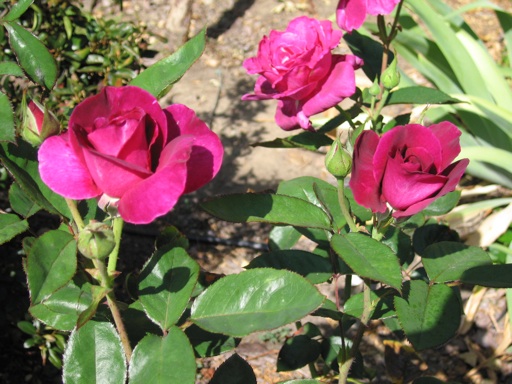
These are pictures of an Intrigue rose bush that is blooming in our yard this week. Intrigue is one of my favorite hybrid tea roses. It has the perfect rose shape as it’s opening. Although, it tends to fade quickly soon after it’s fully opened, and the flowers often get sunburned in hot weather.
I planted this rose bush as a bare root rose about 3 years ago. It grew poorly the first 2 years, probably because it was only getting about 2 hours of direct sunlight a day, and it wasn’t getting watered enough.
Roses are water hungry plants. I now water all of my roses daily with a drip system from April through October. Also, I moved this Intrigue rose bush to a new loaction that gets about 6 hours of direct sun daily. Now, it’s doing great. It’s tripled in size in just the past year.
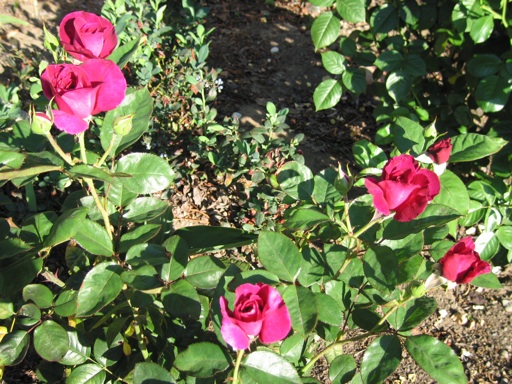
August 06 2008 | Roses | Comments Off on Intrigue Rose
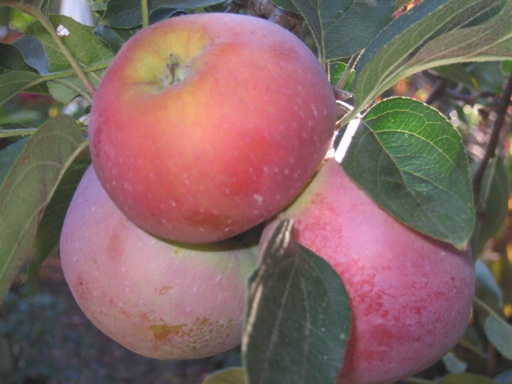
August is Gravenstein apple season in California. Gravenstein apples have been a popular apple here in Northern California for a long time. They are excellent apples for making apple pie and apple sauce, because they have a balanced sweet-tart flavor, and they soften up when cooked.
This is a picture of Gravenstein apples ripening on a small tree in our yard. It’s interesting how red the apples are turning. The apples on my mom’s Gravenstein apple tree are usually yellow with a bit of a red blush. Hers rarely turn this red. There is a variety of apple tree called Red Gravenstein, but our tree was labeled as a regular Gravenstein.
Apple trees are not self-fertile. At least two different varieties of apple trees need to be grown within about 100 feet of each other to achieve successful cross-pollination. Apple trees may not bear apples without proper cross-pollination between two different types of apples. Sometimes an apple tree that is not cross-pollinated produces very small apples or very few apples.
We also have a small Fuji apple tree and a small Granny Smith apple tree. Why three apple trees? Gravenstein apple trees have sterile pollen, which means that a Graventstein will not pollenate the blossoms of another apple tree. Without a third tree, the second tree would not get pollenated. The second apple tree pollenates the Gravenstein and the third apple tree, and the third apple tree pollenates the second apple tree.
Most apples ripen in the late summer or fall. For example, Fuji and Granny Smith apples usually ripen in October into early November. One of the great things about Gravenstein apples is that they ripen early, a month or two before most apples. So we are harvesting apples in the summer and in the fall.
August 03 2008 | Apples | Comments Off on Gravenstein Apple Season
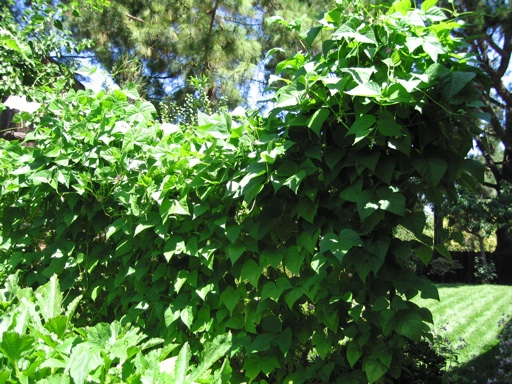
My parents’ vegetable garden (shown above) is looking incredible right now. The Italian green beans my mom planted in April have completely covered the wire fence that my dad put up for them to grow on. The weight of the vines is so heavy that it’s causing the wire fence to sag in the middle.
The vines are just starting to produce a profusion of green beans. They are almost producing more beans than they can eat, even though they haven’t fertilized them. Not only are they fun to harvest, but home-grown green beans are some of the best tasting green beans I have ever eaten.
Green beans are the most tender and delicious if they are picked when the bean pods are small to medium sized. If you pick green beans when the bean seeds inside are large, they are usually tough and less tasty.
My mom starting growing Italian beans several years ago. Last year, she planted bean seeds in my yard. She had gathered the seeds from dried out leftover beans that were still on the vines the previous fall. Those seeds grew and produced an abundance of beans, which we used for great dinner side dishes for months. I saved some of the dried up beans from those plants last fall and planted another generation of beans this spring. They are now full of fruit (see below). I probably won’t need to buy green bean seeds again, at least until I want to try a different variety.
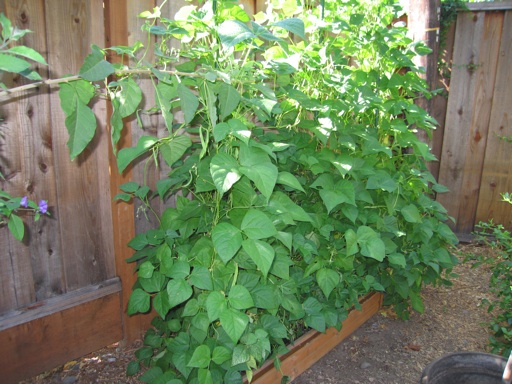
August 02 2008 | Beans | Comments Off on Italian Green Beans
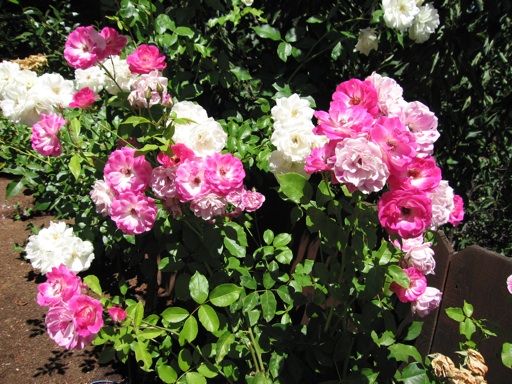
I visited my parents’ house this week to have lunch with my mom and check out her mid-summer garden. These are pictures of iceberg roses that are blooming in her backyard. I was really impressed by the look of pink and white iceberg rose bushes blooming next to each other. I tend to think that too many white roses next to each other looks bland and colorless. This particular combination of two different colors of the same type of floribunda rose makes for an attractive floral display.
August 02 2008 | Roses | Comments Off on Iceberg Roses
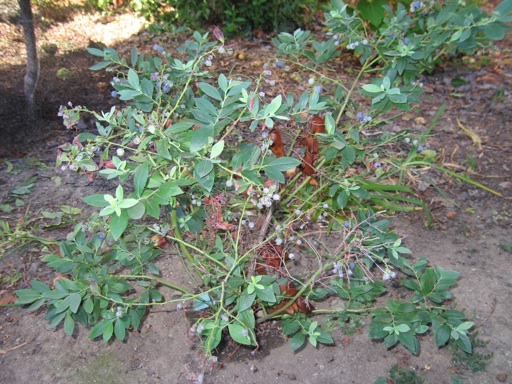
The surprise for me was learning that blueberries would even grow in California. About two years ago, I learned about Southern Highbush blueberries, which are a group of blueberries that were bred to grow and produce fruit in mild weather climates such as USDA zone 9. Southern Highbush Blueberries were developed in Florida. They include varieties with names such as O’Neal, Misty, Jubilee, Southmoon, and Sunshine. The one pictured above is a Sunshine bush growing in my yard.
I added a special acid soil mix to the planting sites and then supplemented with sulfur, because blueberries prefer acidic soil (pH 5.0-6.0). I planted about 7 bushes. They produce berries from June through August. They look healthy. But some of the plants produce a very small harvest (maybe 20-30 berries). And other plants produce many tiny berries.
Whenever a heat wave hits, the new growth gets sunburnt and wilts. Even when the weather is mild, the plants grow very slowly, even though they are getting regular watering from a drip system. Maybe I need to fertilize them more.
Despite the problems, I think they are a great addition to my garden. In this area, they are a novelty. I have never seen them growing in anyone else’s garden in the Bay Area. Plus, the berries are tasty and are great in pies and on cereal.
July 27 2008 | Blueberries | Comments Off on Blueberry Surprise
« Prev - Next »






